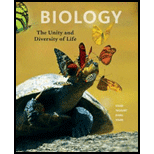
Concept explainers
___ tissues are sheetlike with one free surface.
- a. Epithelial
- b. Muscle
- c. Nervous
- d. Connective
Introduction: The body tissues contain a group of specialized cells that can organize as organs. They have the same structure that can perform a particular function. In a human body, there involves 4 main types of tissues—muscle tissue, connective tissue, epithelial tissue, and nervous tissue.
Answer to Problem 1SQ
Correct answer: Epithelial tissues are sheetlike with one free surface.
Hence, the correct answer is option a.
Explanation of Solution
Reason for correct answer:
The epithelial tissue is a type of tissue that is made up of epithelial cells, and it is a sheet-like cell layer having no extracellular matrix between them. They help to cover the surface of the body and line its internal cavities and tubes. These tissues have one free apical surface. The apical surface refers to the epithelial tissue facing outside environment and the basal surface refers to the epithelial tissue facing the basement membrane. The epithelial cells can be classified into three types based upon their cell shape—cuboidal, squamous, and columnar epithelia. The major functions of the epithelial cells are for secretion, absorption, protection, and sensing.
Option a. is given as “epithelial”.
The epithelial tissue is a type of tissue that is made up of epithelial cells, and it is a sheet-like cell layer having no extracellular matrix between them. These tissues have one free apical surface.
Hence, the correct answer is option a.
Reasons for incorrect answer:
Option b. is given as “muscle”.
Muscle tissues are long and fibrous excitable cells that help for the muscle contraction of the body. These tissues are not sheetlike with one free surface.
Hence, option b. is incorrect.
Option c. is given as “nervous”.
Nervous tissues are present in the nervous system that helps to transmit the signals from the nerves to the brain and spinal cord. These tissues are not sheetlike with one free surface.
Hence, option c. is incorrect.
Option d. is given as “connective”.
Connective tissues help to connect the tissues among one another. These tissues are not sheetlike with one free surface.
Hence, option d. is incorrect.
Hence, the options b., c., and d. are incorrect.
Want to see more full solutions like this?
Chapter 31 Solutions
Biology: The Unity and Diversity of Life (MindTap Course List)
Additional Science Textbook Solutions
Physics for Scientists and Engineers
EBK INTRODUCTION TO CHEMISTRY
Laboratory Manual For Human Anatomy & Physiology
SEELEY'S ANATOMY+PHYSIOLOGY
Biology: Life on Earth with Physiology (11th Edition)
- Can you described the image? Can you explain the question as well their answer and how to get to an answer to an problem like this?arrow_forwardglg 112 mid unit assignment Identifying melting processesarrow_forwardGive only the mode of inheritance consistent with all three pedigrees and only two reasons that support this, nothing more, (it shouldn't take too long)arrow_forward
- Oarrow_forwardDescribe the principle of homeostasis.arrow_forwardExplain how the hormones of the glands listed below travel around the body to target organs and tissues : Pituitary gland Hypothalamus Thyroid Parathyroid Adrenal Pineal Pancreas(islets of langerhans) Gonads (testes and ovaries) Placentaarrow_forward
- What are the functions of the hormones produced in the glands listed below: Pituitary gland Hypothalamus Thyroid Parathyroid Adrenal Pineal Pancreas(islets of langerhans) Gonads (testes and ovaries) Placentaarrow_forwardDescribe the hormones produced in the glands listed below: Pituitary gland Hypothalamus Thyroid Parathyroid Adrenal Pineal Pancreas(islets of langerhans) Gonads (testes and ovaries) Placentaarrow_forwardPlease help me calculate drug dosage from the following information: Patient weight: 35 pounds, so 15.9 kilograms (got this by dividing 35 pounds by 2.2 kilograms) Drug dose: 0.05mg/kg Drug concentration: 2mg/mLarrow_forward
- A 25-year-old woman presents to the emergency department with a 2-day history of fever, chills, severe headache, and confusion. She recently returned from a trip to sub-Saharan Africa, where she did not take malaria prophylaxis. On examination, she is febrile (39.8°C/103.6°F) and hypotensive. Laboratory studies reveal hemoglobin of 8.0 g/dL, platelet count of 50,000/μL, and evidence of hemoglobinuria. A peripheral blood smear shows ring forms and banana-shaped gametocytes. Which of the following Plasmodium species is most likely responsible for her severe symptoms? A. Plasmodium vivax B. Plasmodium ovale C. Plasmodium malariae D. Plasmodium falciparumarrow_forwardStandard Concentration (caffeine) mg/L Absorbance Reading 10 0.322 20 0.697 40 1.535 60 2.520 80 3.100arrow_forwardPlease draw in the missing answer, thank youarrow_forward
 Human Physiology: From Cells to Systems (MindTap ...BiologyISBN:9781285866932Author:Lauralee SherwoodPublisher:Cengage Learning
Human Physiology: From Cells to Systems (MindTap ...BiologyISBN:9781285866932Author:Lauralee SherwoodPublisher:Cengage Learning
 Human Biology (MindTap Course List)BiologyISBN:9781305112100Author:Cecie Starr, Beverly McMillanPublisher:Cengage Learning
Human Biology (MindTap Course List)BiologyISBN:9781305112100Author:Cecie Starr, Beverly McMillanPublisher:Cengage Learning Biology: The Unity and Diversity of Life (MindTap...BiologyISBN:9781305073951Author:Cecie Starr, Ralph Taggart, Christine Evers, Lisa StarrPublisher:Cengage Learning
Biology: The Unity and Diversity of Life (MindTap...BiologyISBN:9781305073951Author:Cecie Starr, Ralph Taggart, Christine Evers, Lisa StarrPublisher:Cengage Learning





